Instruction
How posture influences your swing
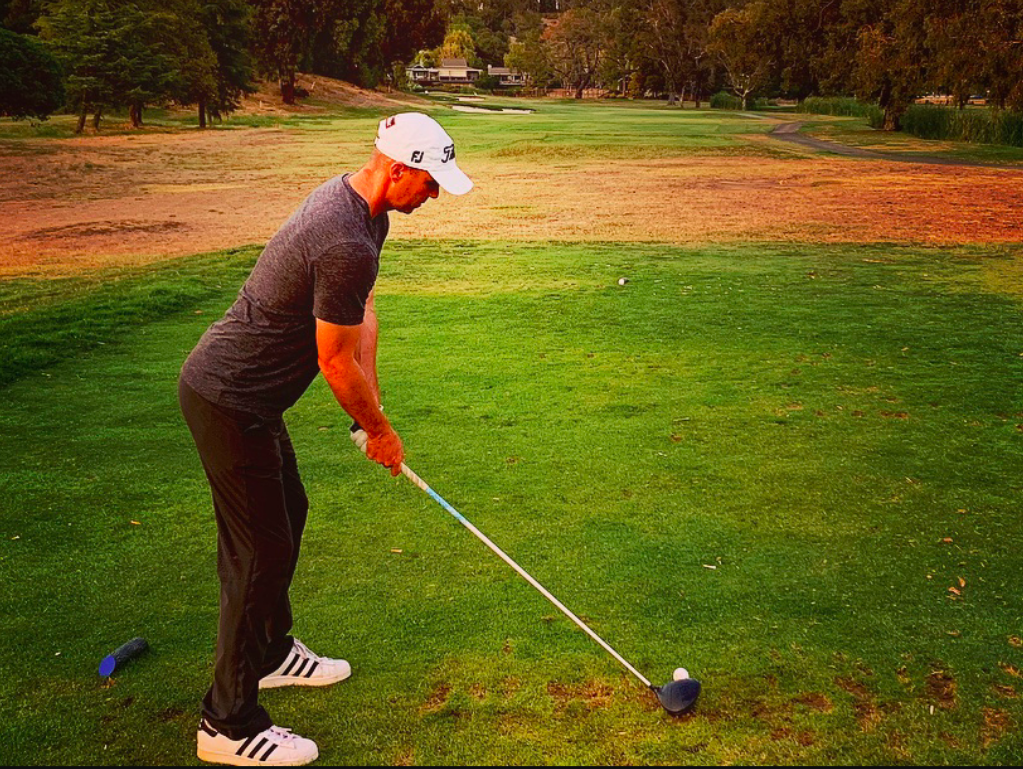
S0 what exactly is posture and how can it alter your swing? Posture is often the origin to a player’s swing pattern. I like to look at posture as the form of the body from the front view and down the line position at address.
“Shape” in posture is the angles our body creates at address. This includes the relationship between the upper and lower half of our bodies. This article will examine the importance of this shape from the face on view.
For an efficient posture that creates a simple, powerful, and repeatable swing, I like a player’s shape to be set into what I call their “hitting angles.” Hitting angles are similar to the impact position. In the picture below, note the body angles at address highlighted in green.
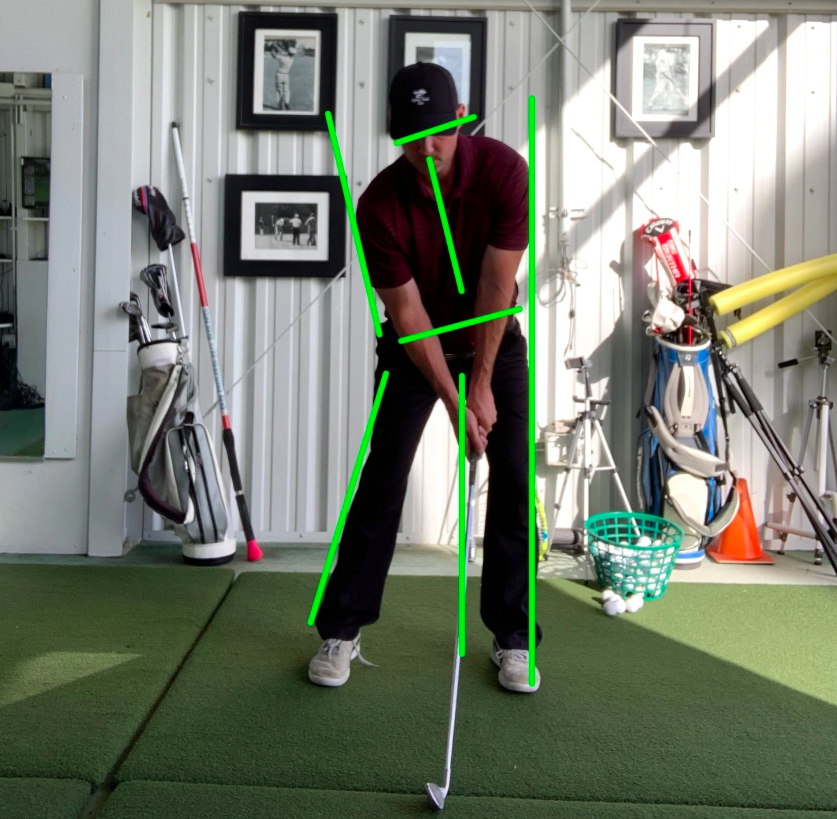
Once we are set into these hitting angles, the goal of the backswing is to maintain these angles, coiling around the spine. When these angles are maintained in the backswing, the club can return to impact in a more dynamic form of our set-up position. This creates minimal effort that produces speed and repeatability—essentially doing more with less.
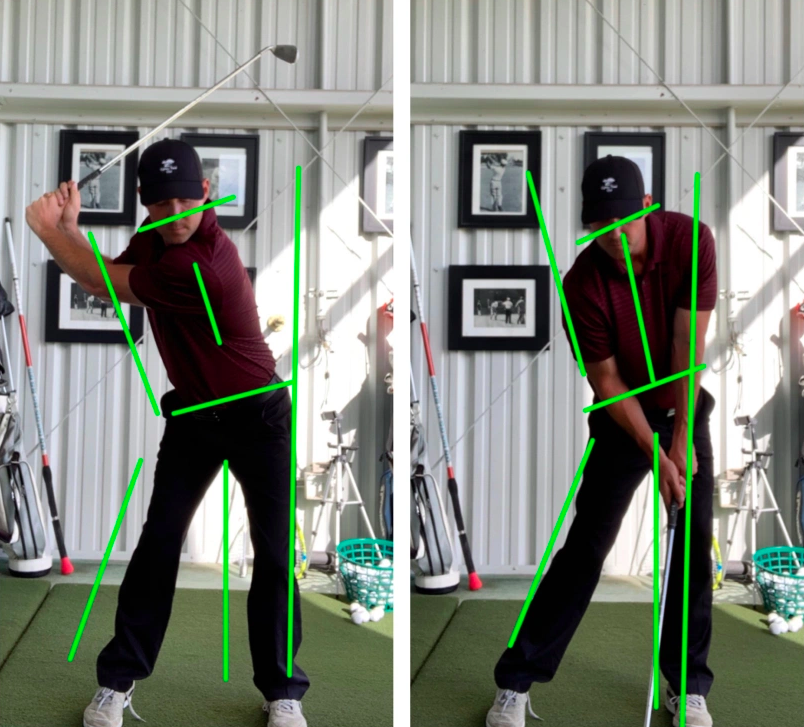
The further we set up away from these hitting angles, our bodies will have to find impact by recovering. This is often where a player’s swing faults can occur. We want our body to react to the target in the golf swing, not recover to strike the ball.
Think of a baseball player or football player throwing a ball. When the athlete is in their throwing position, they can simply make the movement required to throw the ball at their intended target. If their body is contorted or out of position to make the throw, they must re-position their body (more movement) to get back into their throwing position, thus making them less accurate and powerful.
The good news about working on your posture is that it is the easiest part to control in the swing. Posture is a static motion, so our body will respond to 100 percent of what our mind tells it to do. It’s talentless.
Here is a simple routine to get you into these hitting angles.
To start, tuck in your trail arm making it shorter and below the lead arm, which makes your trail shoulder lower than the lead shoulder. This will give you the proper shape of the arms and wrist angles. Pictured right is Ben Hogan.
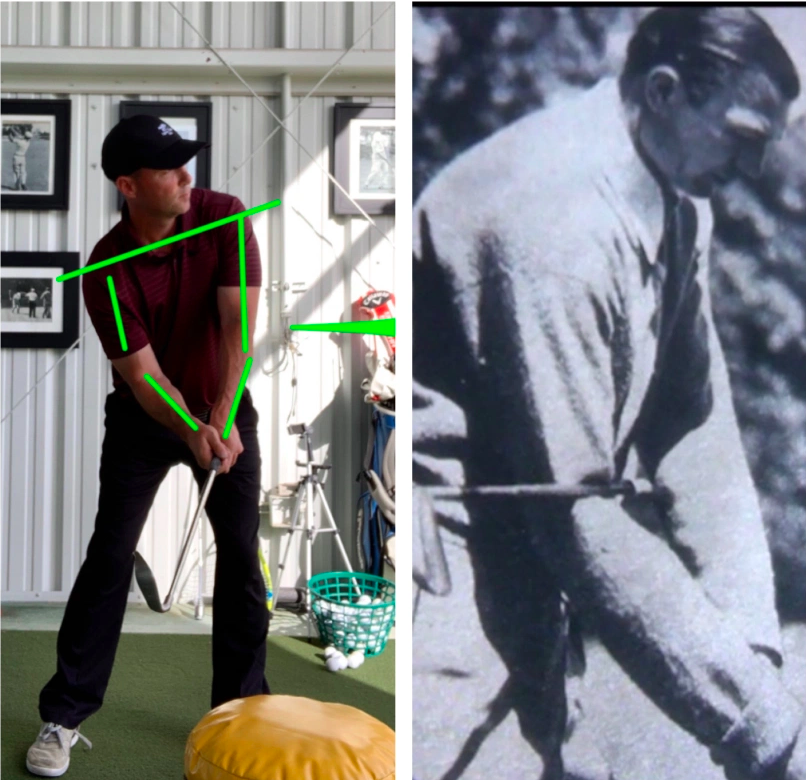
With these arm angles, bend from the hips to the ball and bump your body slightly forward towards the target getting ‘into yourself’. You may feel pressure on your lead foot, but your upper half will still remain behind the ball. Note the picture below with the blue lines.
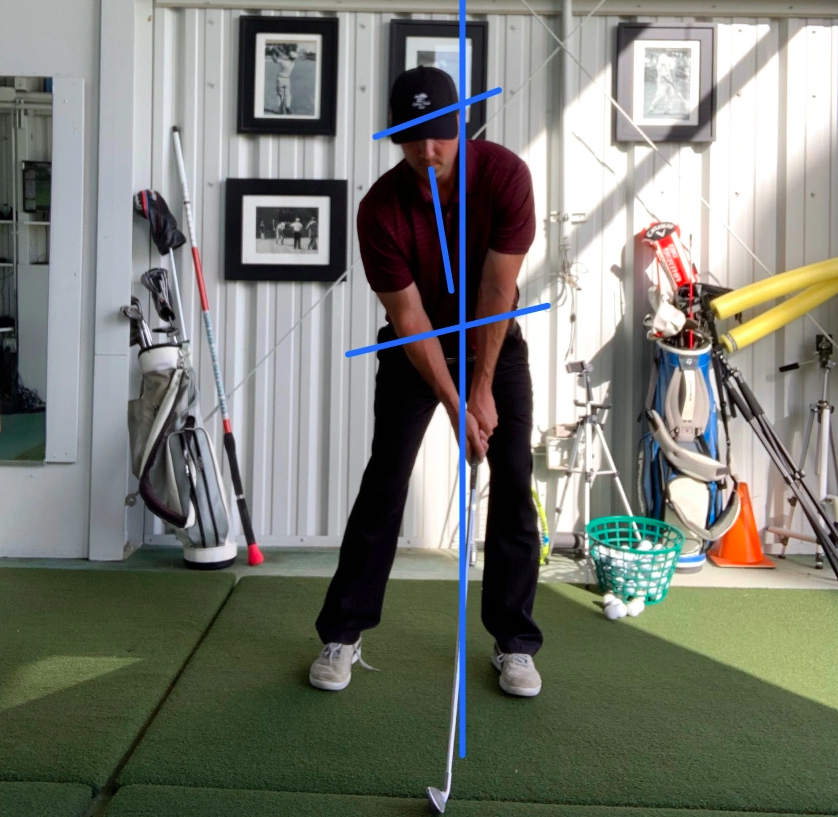
Practice this drill using a mirror in front of you, head up looking into the mirror. Research has shown mirror work enhances motor skills and performance. Anytime you have external-focus based feedback, the learning process will escalate.
There are a lot of different postures on the PGA Tour and many ways to get the job done. There are no cookie-cutter swings, and players have different physiology. However, research and history have shown that an efficient posture gives us the best chance for solid contact and our desired ball flight. Work hard on the areas that are easiest to control: the set-up.
- LIKE201
- LEGIT25
- WOW9
- LOL4
- IDHT3
- FLOP3
- OB4
- SHANK18
Instruction
Clement: Weak grips are injuries in the making for many golfers

Like Jordan Spieth, trying to go to a bowed wrist at the top or in the downswing to square the club is placing you in a dangerous position for your lead wrist; you are one tree root or deep rough situation away from a nasty injury that could easily require surgery. Don’t let this be you.
- LIKE1
- LEGIT0
- WOW0
- LOL0
- IDHT1
- FLOP2
- OB0
- SHANK3
Instruction
Clement: Laid-off or perfect fade? Across-the-line or perfect draw?

Some call the image on the left laid off, but if you are hitting a fade, this could be a perfect backswing for it! Same for across the line for a draw! Stop racking your brain with perceived mistakes and simply match backswing to shot shape!
- LIKE2
- LEGIT0
- WOW0
- LOL0
- IDHT0
- FLOP0
- OB0
- SHANK1
Instruction
The Wedge Guy: The easiest-to-learn golf basic

My golf learning began with this simple fact – if you don’t have a fundamentally sound hold on the golf club, it is practically impossible for your body to execute a fundamentally sound golf swing. I’m still a big believer that the golf swing is much easier to execute if you begin with the proper hold on the club.
As you might imagine, I come into contact with hundreds of golfers of all skill levels. And it is very rare to see a good player with a bad hold on the golf club. There are some exceptions, for sure, but they are very few and very far between, and they typically have beat so many balls with their poor grip that they’ve found a way to work around it.
The reality of biophysics is that the body moves only in certain ways – and the particulars of the way you hold the golf club can totally prevent a sound swing motion that allows the club to release properly through the impact zone. The wonderful thing is that anyone can learn how to put a fundamentally sound hold on the golf club, and you can practice it anywhere your hands are not otherwise engaged, like watching TV or just sitting and relaxing.
Whether you prefer an overlap, interlock or full-finger (not baseball!) grip on the club, the same fundamentals apply. Here are the major grip faults I see most often, in the order of the frequency:
Mis-aligned hands
By this I mean that the palms of the two hands are not parallel to each other. Too many golfers have a weak left hand and strong right, or vice versa. The easiest way to learn how to hold the club with your palms aligned properly is to grip a plain wooden ruler or yardstick. It forces the hands to align properly and shows you how that feels. If you grip and re-grip a yardstick several times, then grip a club, you’ll see that the learning curve is almost immediate.
The position of the grip in the upper/left hand
I also observe many golfers who have the butt of the grip too far into the heel pad of the upper hand (the left hand for right-handed players). It’s amazing how much easier it is to release the club through the ball if even 1/4-1/2″ of the butt is beyond the left heel pad. Try this yourself to see what I mean. Swing the club freely with just your left hand and notice the difference in its release from when you hold it at the end of the grip, versus gripping down even a half inch.
To help you really understand how this works, go to the range and hit shots with your five-iron gripped down a full inch to make the club the same length as your seven-iron. You will probably see an amazing shot shape difference, and likely not see as much distance loss as you would expect.
Too much lower (right) hand on the club
It seems like almost all golfers of 8-10 handicap or higher have the club too far into the palm of the lower hand, because that feels “good” if you are trying to control the path of the clubhead to the ball. But the golf swing is not an effort to hit at the ball – it is a swing of the club. The proper hold on the club has the grip underneath the pad at the base of the fingers. This will likely feel “weak” to you — like you cannot control the club like that. EXACTLY. You should not be trying to control the club with your lower/master hand.
Gripping too tightly
Nearly all golfers hold the club too tightly, which tenses up the forearms and prevents a proper release of the club through impact. In order for the club to move back and through properly, you must feel that the club is controlled by the last three fingers of the upper hand, and the middle two fingers of the lower hand. If you engage your thumbs and forefingers in “holding” the club, the result will almost always be a grip that is too tight. Try this for yourself. Hold the club in your upper hand only, and squeeze firmly with just the last three fingers, with the forefinger and thumb off the club entirely. You have good control, but your forearms are not tense. Then begin to squeeze down with your thumb and forefinger and observe the tensing of the entire forearm. This is the way we are made, so the key to preventing tenseness in the arms is to hold the club very lightly with the “pinchers” — the thumbs and forefingers.
So, those are what I believe are the four fundamentals of a good grip. Anyone can learn them in their home or office very quickly. There is no easier way to improve your ball striking consistency and add distance than giving more attention to the way you hold the golf club.
More from the Wedge Guy
- The Wedge Guy: Golf mastery begins with your wedge game
- The Wedge Guy: Why golf is 20 times harder than brain surgery
- The Wedge Guy: Musings on the golf ball rollback
- LIKE93
- LEGIT16
- WOW6
- LOL1
- IDHT0
- FLOP4
- OB1
- SHANK9
-

 Product Reviews2 weeks ago
Product Reviews2 weeks agoThree Swing Challenge: Testing the Edel Array F-2 putter
-

 Equipment2 weeks ago
Equipment2 weeks agoWhat clubs do equipment free agents choose to use on tour? We found out
-

 News2 weeks ago
News2 weeks agoHighlights from the Wilson Golf Product Testing and Fitting Experience at Pinehurst
-

 News2 weeks ago
News2 weeks agoDavis Thompson’s winning WITB: 2024 John Deere Classic
-

 19th Hole2 weeks ago
19th Hole2 weeks agoMajor champ ‘disappointed’ not to be chosen as U.S. Ryder Cup captain
-

 Whats in the Bag4 days ago
Whats in the Bag4 days agoXander Schauffele’s winning WITB: 2024 Open Championship
-

 19th Hole2 weeks ago
19th Hole2 weeks agoLIV pro explains how he believes players are ‘cheating’ on DP World Tour
-

 19th Hole2 weeks ago
19th Hole2 weeks agoIan Poulter explains decision to skip Open Championship qualifying



















Pingback: Kelley: How a change in awareness can influence your body turn – GolfWRX
Pingback: How a change in awareness can influence your body turn – GolfWRX
Pingback: Kelley: Create shallow space with your direction of turn – GolfWRX
Pingback: Create shallow space with your direction of turn – GolfWRX
Pingback: The importance of arm structure – GolfWRX
Pingback: Attention – The missing link to golf performance – GolfWRX
Pingback: How the direction of turn influences your swing – Golfwrx